03 de janeiro de 2026
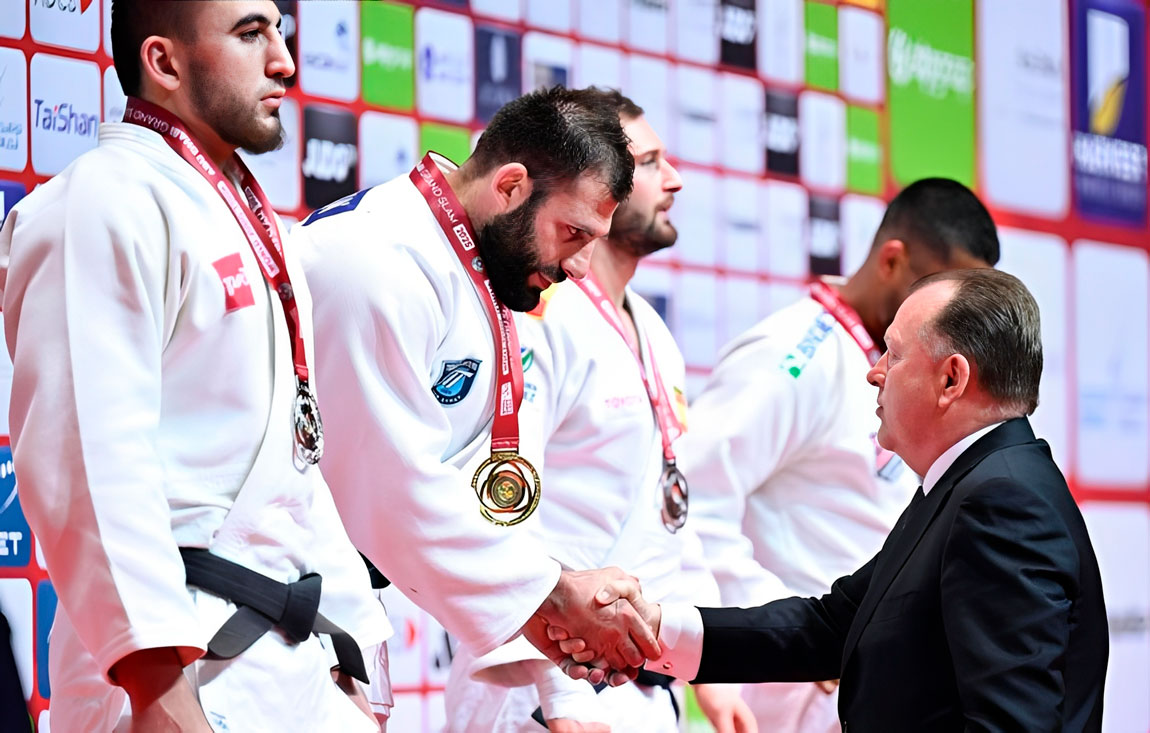
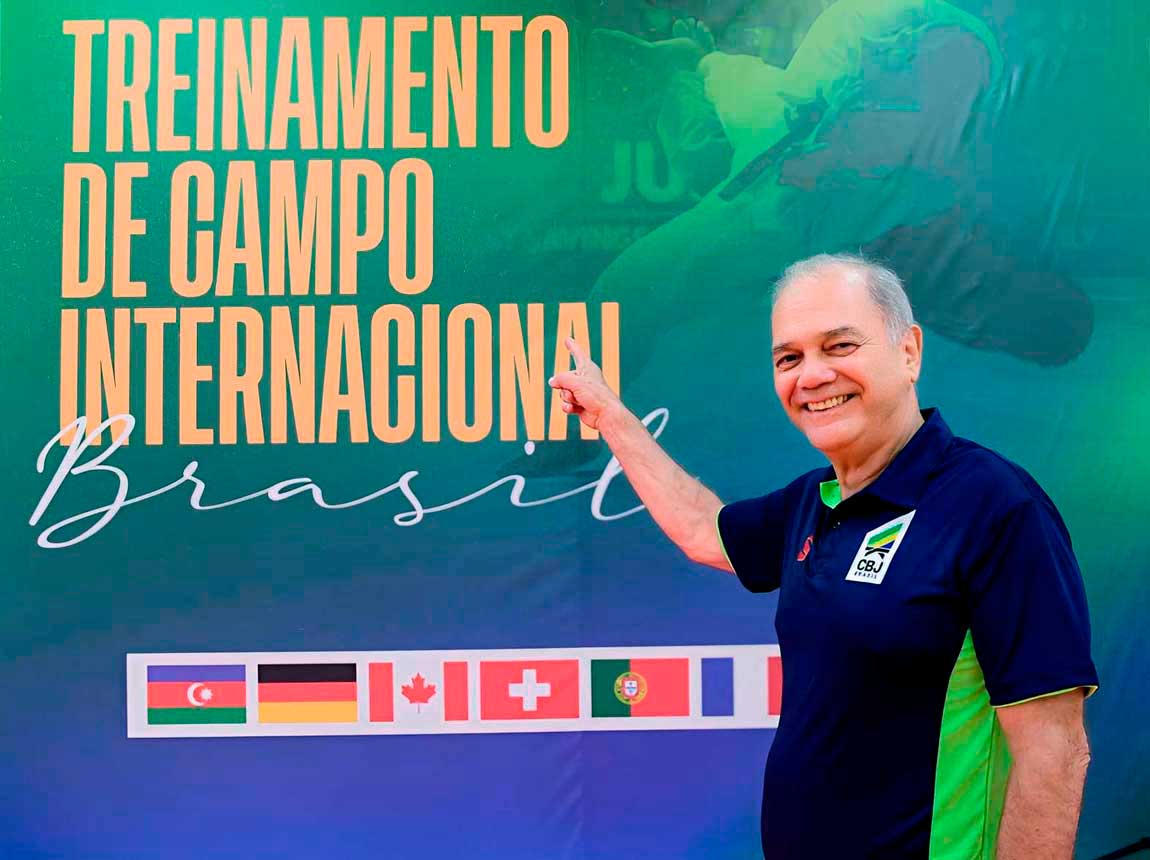 Paulo Wanderley played a central role at the International Training Camp in Pindamonhangaba © Anderson Neves / CBJ
Paulo Wanderley played a central role at the International Training Camp in Pindamonhangaba © Anderson Neves / CBJ
A specially prepared dojo at the Colonial Plaza Hotel in Pindamonhangaba, São Paulo, hosted the Brazilian Judo Confederation’s (CBJ) International Training Camp from September 8 to 18. Over ten days of intense activity, nearly 300 judoka from ten countries — including world and Olympic champions — trained side by side in an atmosphere that combined elite technical preparation, cultural exchange, and solidarity.
The scope of the event resonated well beyond Brazil’s borders. In a feature by journalist Nicolas Messner, the International Judo Federation (IJF) described the camp as a “truly international gathering,” emphasizing the quality of the training sessions, the spirit of friendship, and the warm Brazilian hospitality.
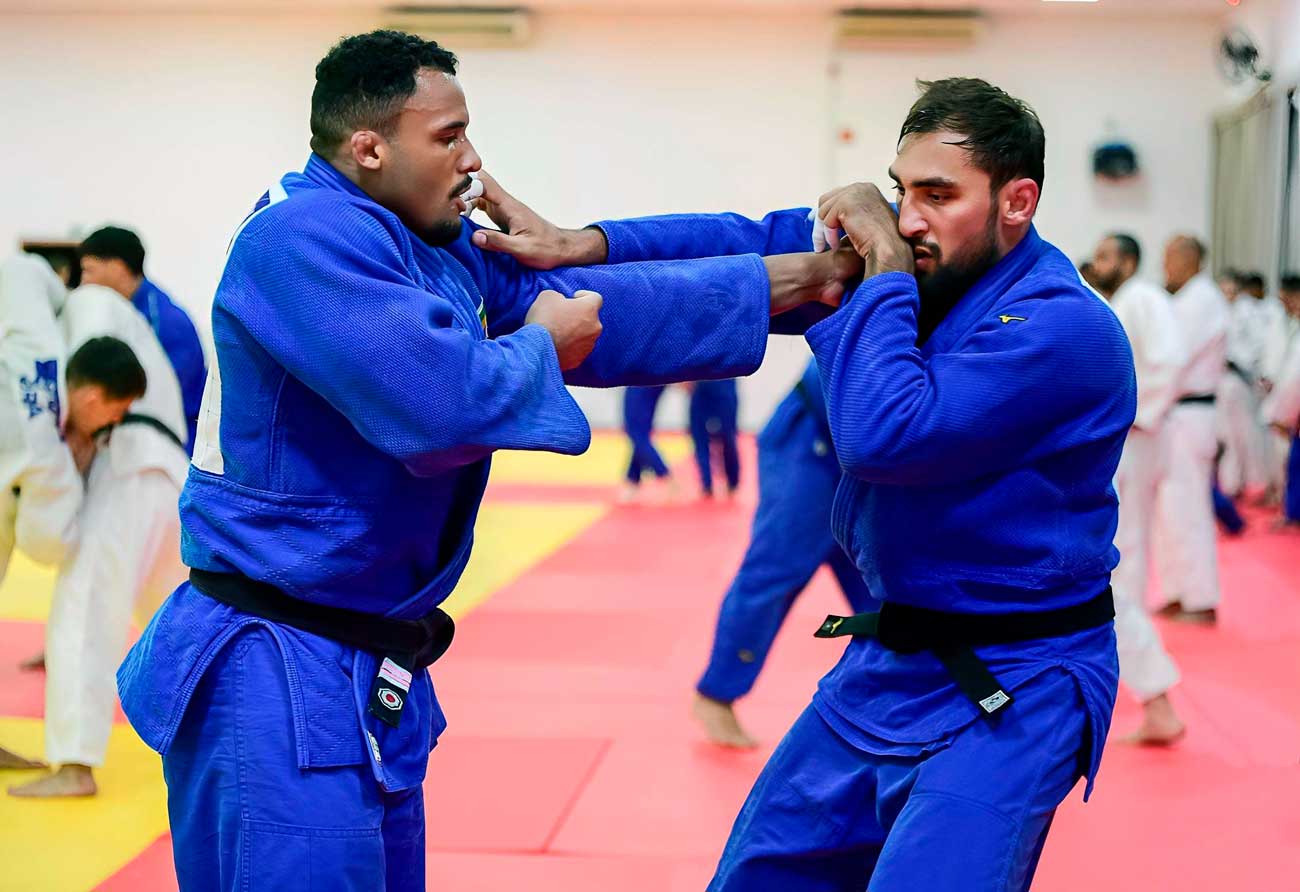
Olympic champion Zelym Kotsoiev of Azerbaijan showed great intensity during the randori sessions © Anderson Neves / CBJ
For CBJ President Paulo Wanderley, the International Training Camp is already established as a tradition within Brazilian judo, but the goal now is to expand its institutional reach.
“This training camp has already gained wide acceptance among the participating countries, but our ambition is to turn it into something even more official. We are in discussions with the Pan American Judo Confederation and its president, Carlos Zegarra, to make it a permanent event for the Americas, with Brazil as its host nation. It is a way to showcase the strength of our judo to the world and to establish Brazil as an international reference,” said the president, who closely followed the activities in Pindamonhangaba.
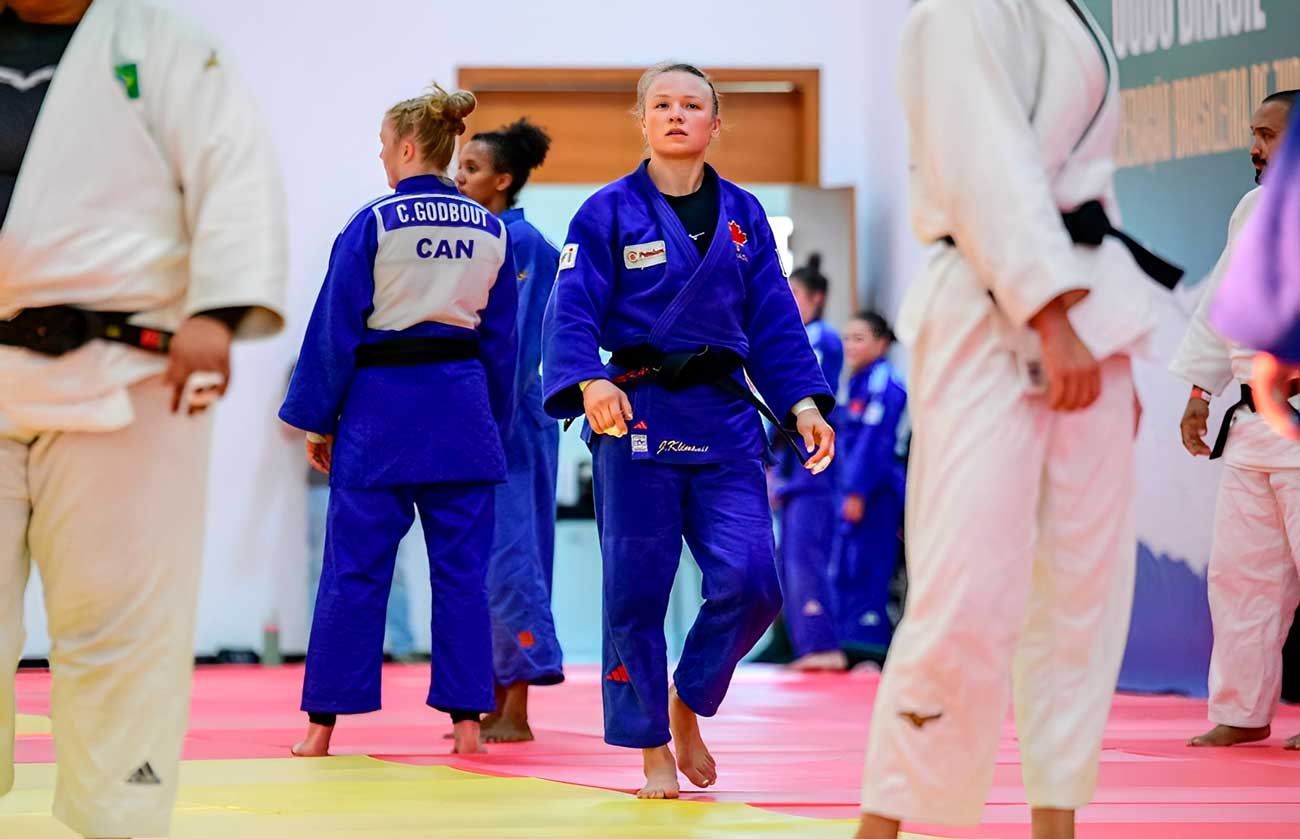
Canada’s Jessica Klimkait, bronze medalist at the Tokyo 2020 Olympic Games, was one of the major highlights of women’s judo in Pindamonhangaba © Anderson Neves / CBJ
Wanderley’s remarks echoed the IJF’s own analysis, which praised the camp’s global and inclusive character: athletes from diverse cultures, generations, and competitive backgrounds shared the same tatami in daily sessions that combined randori, technical drills, and physical preparation.
Also present in Pindamonhangaba, Henrique Guimarães — President of the São Paulo Judo Federation and Olympic bronze medalist at Atlanta 1996 (-65kg) — underlined the importance of the International Training Camp as a showcase for Brazilian judo.
“It was an honor for São Paulo to host this major high-performance gathering, bringing together judoka from different countries and generations. I congratulate Professor Paulo Wanderley and Professor Marcelo Theotonio, CBJ’s Technical Director, for their ability to organize and attract so many Olympic and World medalists into an environment of the highest level of training. The result is an exchange that strengthens our sport and further elevates Brazilian judo on the international stage.”
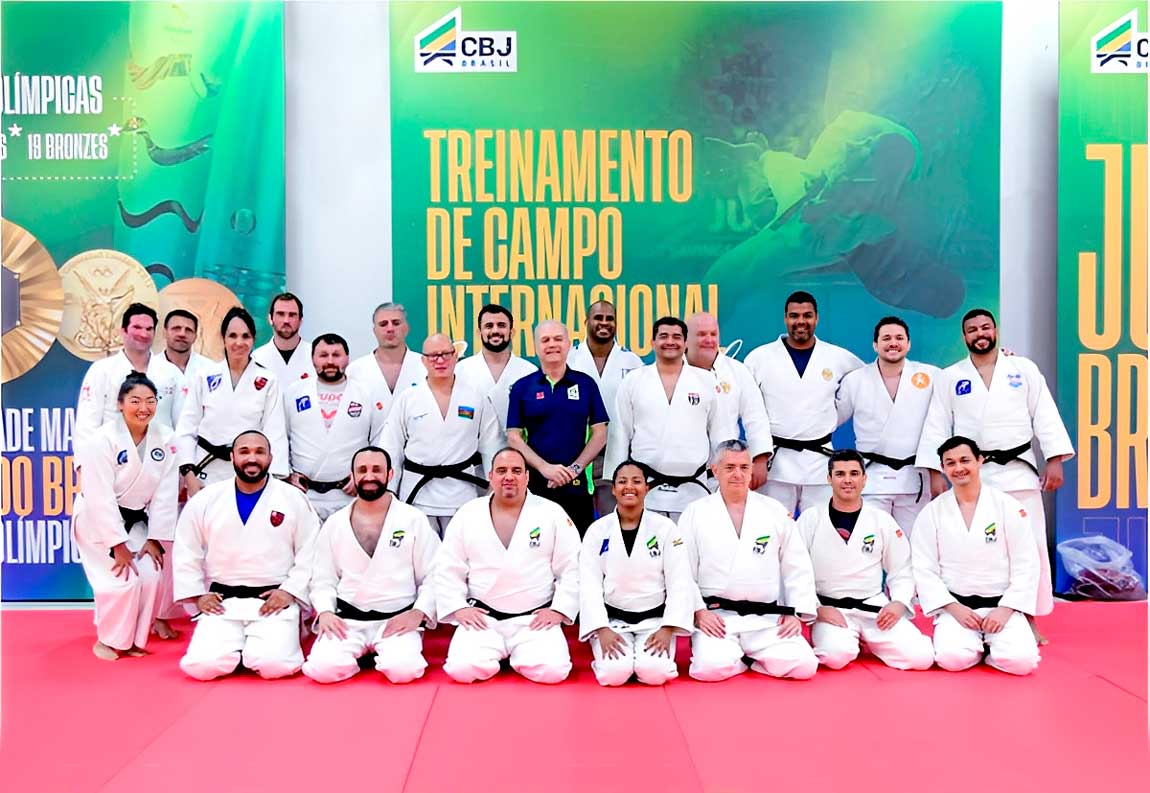
CBJ President Paulo Wanderley alongside coaches during the International Training Camp in Pindamonhangaba © Anderson Neves / CBJ
CBJ’s technical staff also celebrated the results of the camp. Marcelo Theotonio, CBJ’s Sports Director, emphasized that the period was essential for raising the level of Brazil’s preparation for the Olympic cycle.
“It was a training camp of the highest quality, with athletes who have won Olympic and World medals. This raised the bar and allowed us to absorb valuable experience as we continue our plan toward Los Angeles 2028.”

Daniel Cargnin pictured with Hidayat Heydarov, Olympic champion at Paris 2024, World champion in 2024, and four-time European champion (2017, 2022, 2023, 2024) © Anderson Neves / CBJ
Alongside Theotonio, Professor Andrea Berti, head coach of the Brazilian women’s senior team, highlighted the importance of hosting foreign delegations on home soil, especially at this stage of the season.
“It was extremely valuable to have these countries here in Brazil for such an extended period, working together on technical and tactical aspects. We will meet them again in upcoming competitions, and this early preparation makes all the difference.”
Professor Antônio Carlos Pereira, known as Kiko, head coach of the Brazilian men’s senior team, reflected on the practical impact of the gathering:
“The participating countries praised our training because the quality of Brazilian judo is very high. I am certain that we built up a reserve of energy here for the next competitions. Different schools, different methodologies — all of this adds to our productivity. I am very motivated and optimistic that, over the next four months, our team will win many international medals.”

Paulo Wanderley with former members of the Brazilian women’s national team, now serving in the technical staff of clubs and CBJ © Anderson Neves / CBJ
Among the Brazilian participants were major names such as Rafaela Silva, Daniel Cargnin, Larissa Pimenta, Willian Lima, Rafael Macedo, Guilherme Schmidt, and Leonardo Gonçalves — all Olympic or World medalists.
From abroad came heavyweights like Hidayat Heydarov (-73kg) and Zelym Kotsoiev (-100kg) of Azerbaijan; Patricia Sampaio (-78kg) of Portugal; and Jessica Klimkait (-63kg) of Canada. Teams from Germany, Croatia, and Switzerland also took part, enriching the exchange.
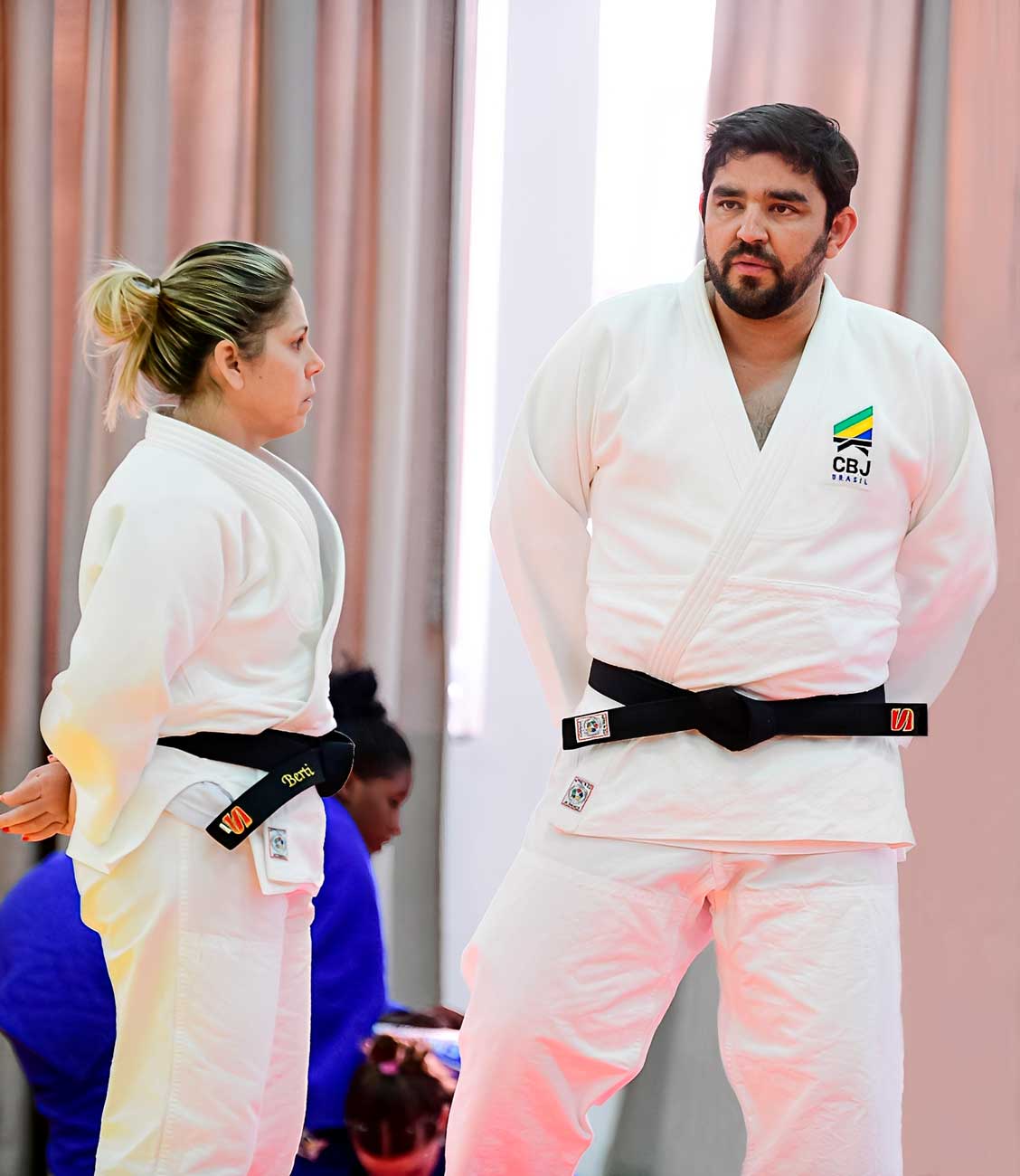
Coaches Andrea Berti and Marcelo Theotonio during the International Training Camp in Pindamonhangaba © Anderson Neves / CBJ
The IJF highlighted the symbolic strength of this coexistence: emerging talents training alongside established champions, all united by the discipline, respect, and friendship that define judo.
Among the many stars present in Pindamonhangaba, none carried more symbolism than Rafaela Silva — two-time World champion (-57kg, Rio 2013 and Tashkent 2022), Olympic champion in Rio 2016, Pan American champion in Santiago 2023, and mixed team bronze medalist at Paris 2024. Recognized as Brazil’s most accomplished judoka, Rafaela was also one of the voices who best captured the spirit of the International Training Camp.
“For me, the competitive side stays in the shiai-jô, when medals, points, or qualification are on the line. But once we leave the tatami, we all play volleyball together, card games, football — everyone jokes, everyone enjoys themselves. When it’s time to be professional, we know how to separate that. The atmosphere was really special. The food was excellent, the environment was fantastic, and the training sessions were very tough — and that’s what matters.”
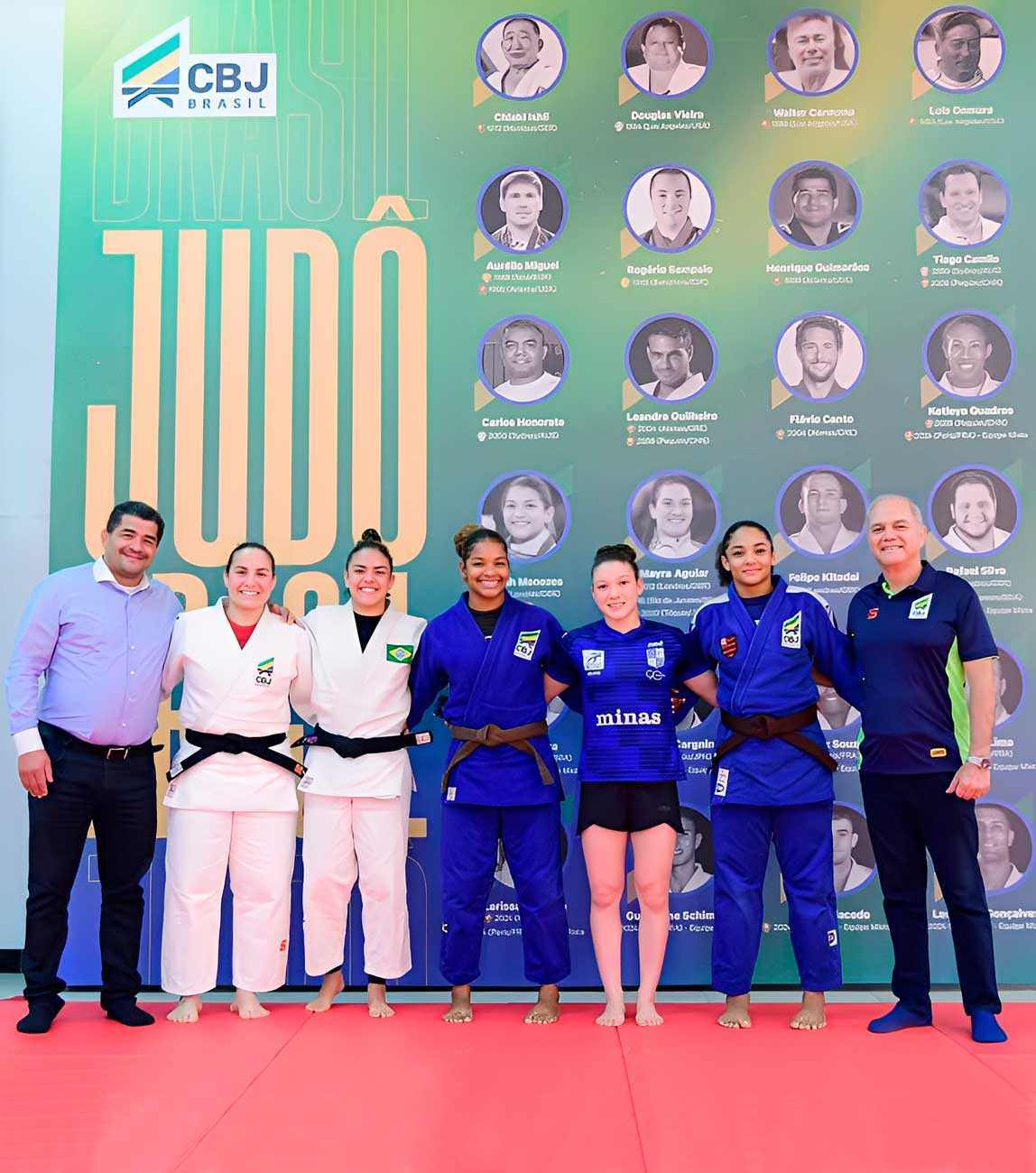
Paulo Wanderley, Henrique Guimarães, and Maria Portela honoring Clarisse Vallim and Clarice Ribeiro, World champions in Sofia, and Nicole Marques and Laryssa Fonseca, bronze medalists © Anderson Neves / CBJ
Her words, grounded in a career forged and crowned on the world’s biggest stages, sum up the purpose of the gathering: to train hard on the tatami while strengthening human bonds off it, bringing together generations, nations, and styles under shared values.
Making his presence felt with remarkable leadership, CBJ President Paulo Wanderley — former President of the Brazilian Olympic Committee and former Vice President of the International Judo Federation — closely followed the International Training Camp at the Colonial Plaza in Pindamonhangaba. For several days he was on the dojo floor, observing activities, speaking with athletes and coaches, and delivering a motivational lecture that reinforced the importance of collective preparation and unity around Brazilian judo.

Henrique Guimarães in conversation with Antônio Carlos Pereira, known as Kiko, head coach of the Brazilian men’s senior national team © Anderson Neves / CBJ
Constantly approached for photos, he was a central figure in every session, displaying charisma and accessibility. One symbolic gesture stood out: he made a point of gathering all the Brazilian medalists from the Cadet World Championships in Sofia, alongside coach Maria Portela and FPJudô President Henrique Guimarães, for a historic photo. The moment not only celebrated the new generation but also reinforced the image of a leader who recognizes and values achievements, turning a simple photo opportunity into a powerful act of institutional recognition.
In Pindamonhangaba — strategically located about 130 km from São Paulo and 290 km from Rio de Janeiro, at the foot of the Serra da Mantiqueira and part of the Taubaté–Pindamonhangaba Immediate Geographic Region in the Paraíba Valley — Brazilian judo did more than train: it showed the world its ability to organize, welcome, and inspire. With roots dating back to the 17th century, the city has now established itself as a hub for high-performance judo and international exchange, while preserving its touristic vocation tied to the natural beauty of the Mantiqueira and its proximity to some of Brazil’s most iconic destinations.
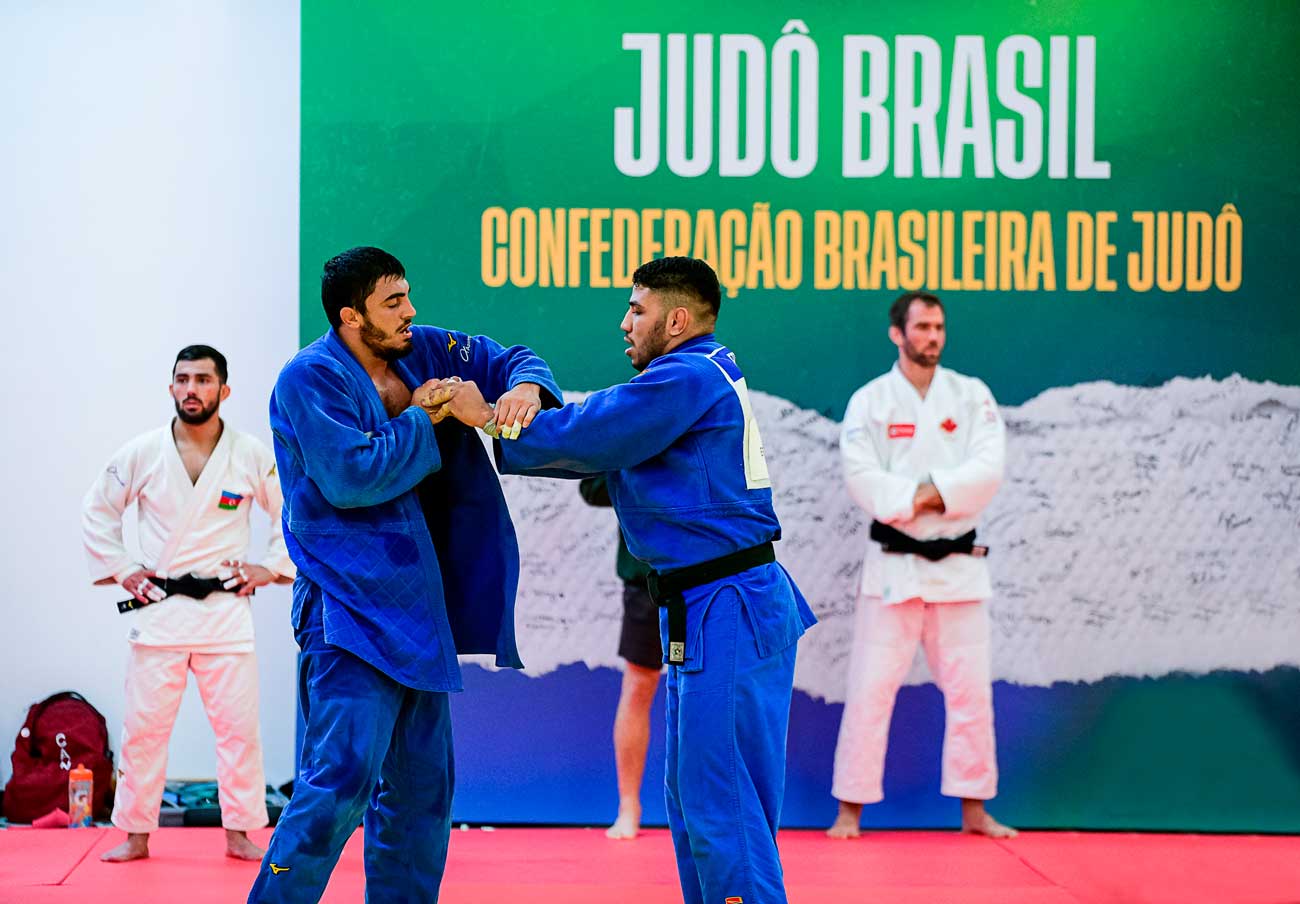
Giovani Ferreira in randori with Murad Fatiyev, multiple medalist from Azerbaijan in the -81kg category © Anderson Neves / CBJ
Just 175 km away lies Paraty, recognized by UNESCO as a World Heritage Site, within an area that includes the Serra da Bocaina National Park, the Praia do Sul State Biological Reserve, the Cairuçu Environmental Protection Area, Paraty’s Historic Center, and the Morro da Vila Velha. The coastal city of Rio de Janeiro state, already part of UNESCO’s Creative Cities Network in the field of Gastronomy, combines its colonial heritage with the natural and cultural richness of a unique territory where history, biodiversity, and art converge. Together, the Pindamonhangaba–Paraty axis symbolizes not only Brazil’s sporting strength but also its ability to welcome the world in settings where tradition, nature, and culture meet.
With the success of the International Training Camp, CBJ reinforced its leadership on the continent and expanded its global visibility. The event was more than preparation — it became a showcase for Brazilian judo as a host, a developer of talent, and a global partner.
Now, attention turns to the Junior World Championships, from October 5 to 8, and the Grand Prix in Lima, from October 11 to 13 — the next major challenges on the international calendar.
Click HERE to access the Flickr photo album of the International Training Camp.